CRN Exclusive: HPE's Antonio Neri Discusses Nimble Storage Acquisition And Nimble's Lenovo And Cisco Relationships
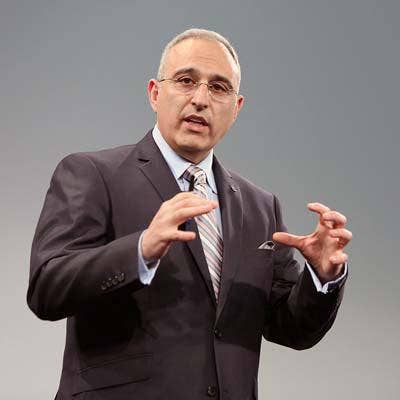
HPE Counts On Nimble Storage To Fill Storage Portfolio Gaps
Antonio Neri, executive vice president and general manager of Hewlett Packard Enterprise's Enterprise Group, spoke with CRN about HPE's planned $1-billion acquisition of Nimble Storage and how that company's products will impact HPE's storage portfolio.
Nimble Storage will provide the future entry-level storage counterpart to HPE's 3Par enterprise line. But an even more important element is the plan to use Nimble Storage's InfoSight predictive analytics technology to manage HPE's entire storage portfolio and interface with its OneView infrastructure management solution.
Nimble Storage, when combined with HPE's acquisition last month of SimpliVity, means that HPE is ready significantly enhance its ability to compete with its major storage competitors. For details about how it will do so, and to learn the fate of Nimble Storage's relationships with HPE rivals Lenovo and Cisco, turn the page.

What does HPE want with Nimble Storage?
It's to advance our HPE hybrid IT strategy, and in particular, strengthen our relationships in the fast-growing flash storage market. As you know, that market is growing. It's accelerating. Four years from now, it's going to be a $6 billion market. We already have an excellent presence with 3Par. This will complement our portfolio and give us full end-to-end coverage from the entry to the mid [market] to the high-end. This will be a leading-edge storage portfolio.
[The acquisition] accelerates the growth that they already have stand-alone. It's going to make it much easier for them to access new customers ... And now, moving up-market into the enterprise with us will make it much easier for them [with] access to our go-to-market, connecting to new technologies like HPE Synergy, and our compute portfolio: There are a lot of synergies here that we're going to drive for them, and for us, as a complete portfolio.
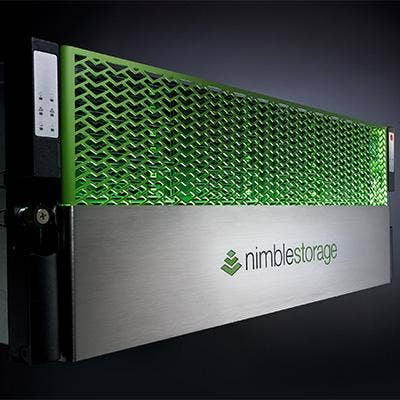
What do you mean by a complete portfolio?
The portfolio has HPE 3Par for an enterprise-class, all-flash data center. With Nimble, we're going to have straightforward predictive flash entry to midrange [storage]. We have the MSA still available, what I call a simple flash-acceleration array at an entry price point. And there's SimpliVity, which you are very familiar with, which is really built for enterprise software-defined hyper-converged infrastructure. So we have now a complete portfolio that we can deliver against our vision of hybrid IT.
And then we have two assets that sit on top of those. One is to take Nimble InfoSight … predictive analytics, and scale it across the entire storage portfolio first. And then connect Nimble into our HPE OneView infrastructure management backplane to really provide one integrated, unified, federated experience.

You mentioned "hybrid IT strategy." What's HPE's vision there?
Our core belief is the world will be [centered around] hybrid IT. It will be a combination of off-prem and on-prem solutions. In the transition from traditional IT to software-defined, this acquisition fits perfectly in the software-defined portfolio. SimpliVity is one aspect. 3Par is there. Things like Composable Infrastructure and Synergy are other aspects of that portfolio.
We are beefing up our assets to deliver a software-defined portfolio to our customers with all-flash capabilities and [the ability to] deploy hybrid IT in the simplest way that they can. That's our goal here, and [Nimble] accelerates our strategy to make hybrid IT a reality.
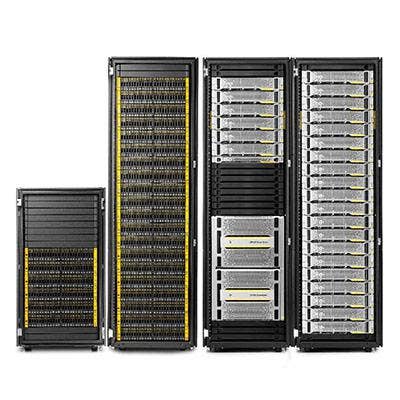
Nimble Storage traditionally focused on hybrid flash arrays, and recently expanded to all-flash arrays. This sits between HPE 3Par at the high-end, and MSA at the entry point. What about product overlap?
Actually, totally complementary. First of all, 3Par has both hybrid and all-flash. Nimble has both hybrid and, to your point, they just entered all-flash, which is the fastest-growing part of the [storage market]. However, their focus has been more on the entry segment of storage. 3Par has been more in the midrange and high-end of storage. So now we can cover every price point, every feature, from the entry to the high-end, between Nimble and 3Par. So there is little to no overlap … So now we can offer a complete end-to-end portfolio for every use case, every workload, every size of external storage …
3Par did not have the entry side. We used to cover that with MSA. But MSA is kind of an old technology, [and it] does not work for all use cases.
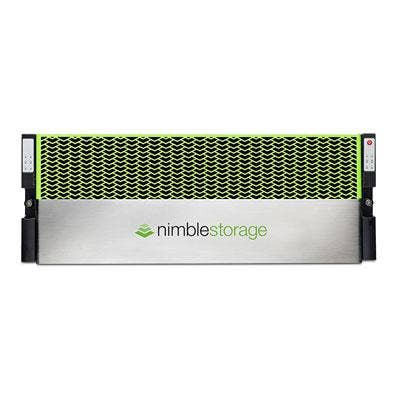
Was HPE looking more at the InfoSight technology or the storage array technology of Nimble Storage?
[Nimble] has two different platforms that scale very, very well. But then the crown jewel clearly is InfoSight which provides predictive analytics that monitors the customer deployments and the performance and the support aspect of that. And along the way, we learned about the scalability of the platform. So our goal is to take the InfoSight and scale it into 3Par, because then we can provide a common experience irrespective of the size of the storage or the architectures underneath.
So for us, it was the entry side of the storage, and the all-flash, and definitely along the way we realized the opportunity to leverage an asset like InfoSight and scale it.
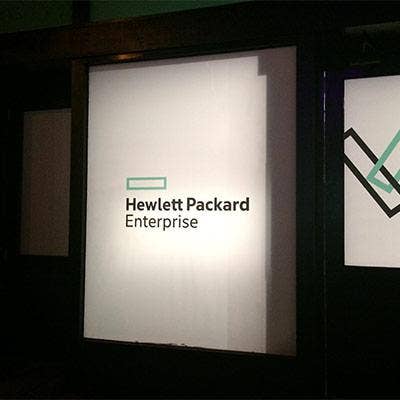
HPE will now have at least five storage lines, including MSA, Nimble, 3Par, StoreVirtual, and SimpliVity. Isn't there a risk that HPE has too many storage lines?
No. And as we go along, our goal is to cover the lower-end with Nimble to the entry of the midrange, and then from the midrange to the enterprise with 3Par. So there will definitely be Nimble and 3Par. That's in the external storage array with both hybrid and all-flash. When I go to scale-out, software-defined, and hyper-converged use cases, this is where HPE SimpliVity is the only platform.
So over time, remember, StoreVirtual will evolve into the SimpliVity platform. And then as we scale down Nimble into the MSA, we're going to move MSA into the Nimble side of the house.
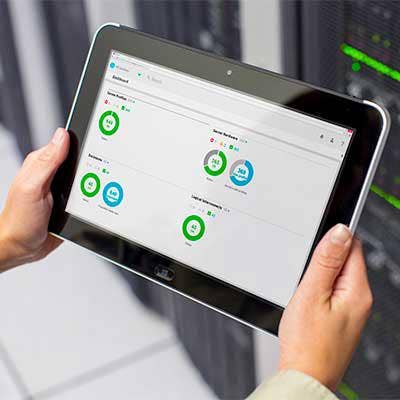
How will HPE's storage portfolio look in the end?
Eventually, we're going to end up with Nimble, 3Par, and SimpliVity for hyper-converged, and InfoSight as predictive analytics for all storage platforms. And then let's not forget about HPE OneView. HPE OneView will be the common infrastructure management and lifecycle management whether you are in 3Par, Nimble, or SimpliVity. So if you are deploying a full stack of architectures for these three use cases … you can control everything with one single pane of glass with HPE OneView.

So is this the end of HPE's MSA storage line?
The MSA has a life, and it will have a life for a while. Remember, we have half-a-million units installed. And when you look at the simple acceleration-type of storage at a very, very low price point, we still have a space in the portfolio. But as the flash price points keep coming down, as the ability to provide both capex and opex grows, I have to believe over time we will be able to cover the [entry] space with the Nimble portfolio, because that's the beauty of the architecture.
I would not call it the end yet. I think there is a transition time we will have to go through. But the good news is, we give customers a choice, [and] we can do it through one single control point, which is HPE OneView.

Given the long-term decreasing cost of flash, could we see the end of hybrid flash and disk storage arrays shortly?
I don't think so. But time will tell. Remember, hybrid arrays were originally popular because when you need high performance and low latency, flash is the way to go. But there is a lot of [data] that you access only once in a while – cold storage – and spinning disk is still cheaper [than flash disk]. So you want the mix. And the good news is, 3Par and Nimble can manage the hybrid solution. So I don't think it will happen immediately. Maybe over time as the price [gap] continues to collapse. But right now, there are reasons why they work together well and will continue for a while.
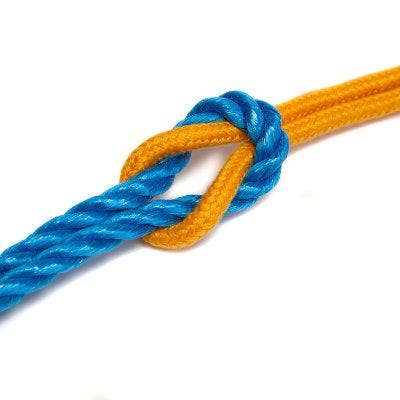
Is there much overlap in HPE's and Nimble Storage's channel partner communities?
Actually, there's not. We realized quickly enough that there is less than 15 percent overlap here. Remember, most of their business is in the United States. Sixty percent of our business is outside the United States. So for us, scaling Nimble outside the United States is going to be a priority … This is really an opportunity to cross-sell and up-sell both sides and leverage our channel partners.
By the way, throughout the day, I got a lot of positive reports about this acquisition from the channel partners which have strong relationships with us, and they are excited because we are giving them a complete, full range of leading storage solutions.

This acquisition comes at a time when total storage revenue is dropping in HPE and across the industry. What's your end game?
The storage market as a whole has been declining. However, inside that storage market are ins and outs. You see traditional storage declining, but flash growing very, very rapidly. And if you go back to what we said many times before … all-flash is one of the focuses of growth in the data center. And that's why this acquisition is very good for us.
So yes, this $25 billion market is declining. The all-flash [part] is $3 billion, growing to $6 billion in the next three years. We have been a leading all-flash provider for the last couple of years with 3Par. Nimble has done a phenomenal job. In their last quarter, they just announced they have been growing 70 percent-plus.
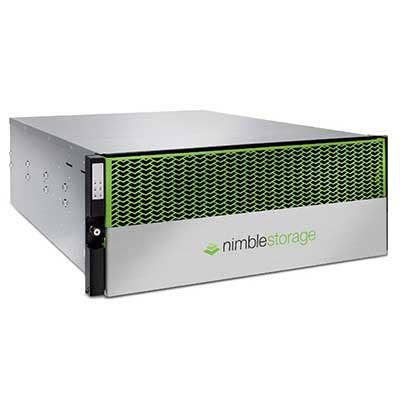
I saw Nimble Storage's growth. But losses are growing at about the same rate as revenue. How does HPE handle bringing in a company that's losing money?
Obviously, there will be some synergies we're going to drive here, particularly on the supporting functions side of the house. We're going to preserve the entire R&D side and the vast majority of the sales force. The synergy will come from the back-end support for the company. And also remember, this company had a large stock-based comp, which was part of the losses. There will be a reset there, and that will eliminate a significant amount of losses.
So this, in many ways, is actually easy for us to absorb. Our focus is really to accelerate growth. This whole business is gearing to accelerate growth. And we said it would be accretive in the first fiscal year following the close.

The deal is not slated to close until April. Is Nimble Storage still open to other bidders like Cisco?
The way we structured the deal, we are well positioned. I think the Nimble team, the Nimble board, is incented to close the deal. A closing of the deal is not that far out. In fact, it's fairly short for a publicly-traded company. The good news is, we have a lot of expertise now in investing and divesting and buying and so forth. So we are on a good path to get this done as soon as possible.
Does that mean the deal is structured so there is no other bidding possible?
Correct. Basically, there is a no-shop agreement here.
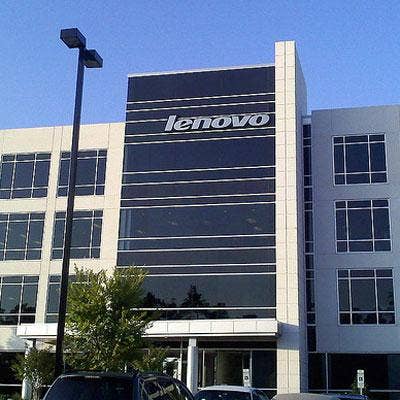
What happens with Nimble Storage's strategic partnerships? It has an OEM deal with Lenovo and a meet-in-the-channel relationship with Cisco.
Obviously, we will focus on HPE. And I would expect that [those deals will end]. In fact, to give you perspective, I was just at the Nimble headquarters, and I hosted an employee meeting. It was overwhelmingly positive. A lot of excitement. They understand what the deal will do for them. And in their eyes, this is a billion-dollar company, because we will pay a billion dollars for it. They asked me, what is going to happen to those [relationships], and I said they were over. There will not be a relationship with those companies.
The customers have choices. If ultimately they standardize on one of those platforms, we will sell Nimble to attach to them. But it will be done at the customer level, not at the partnership level.